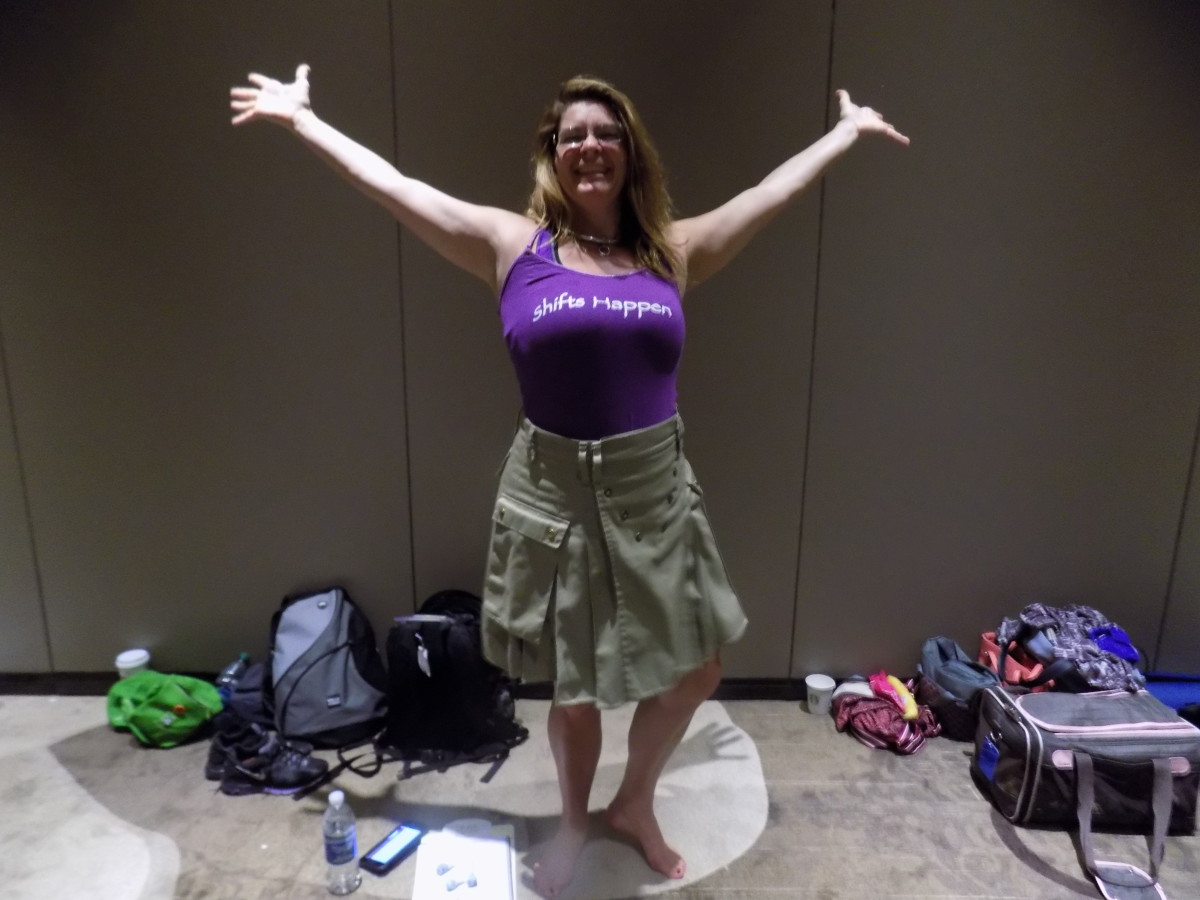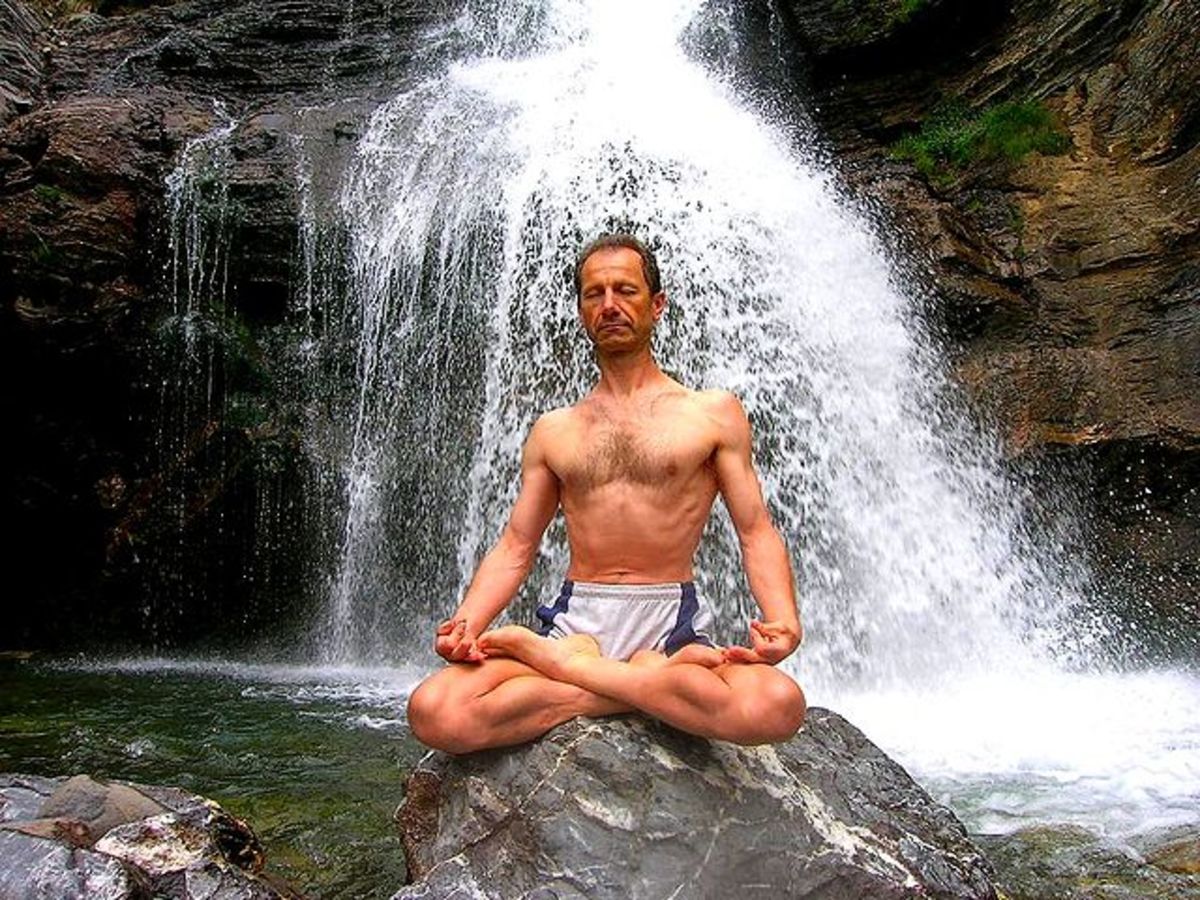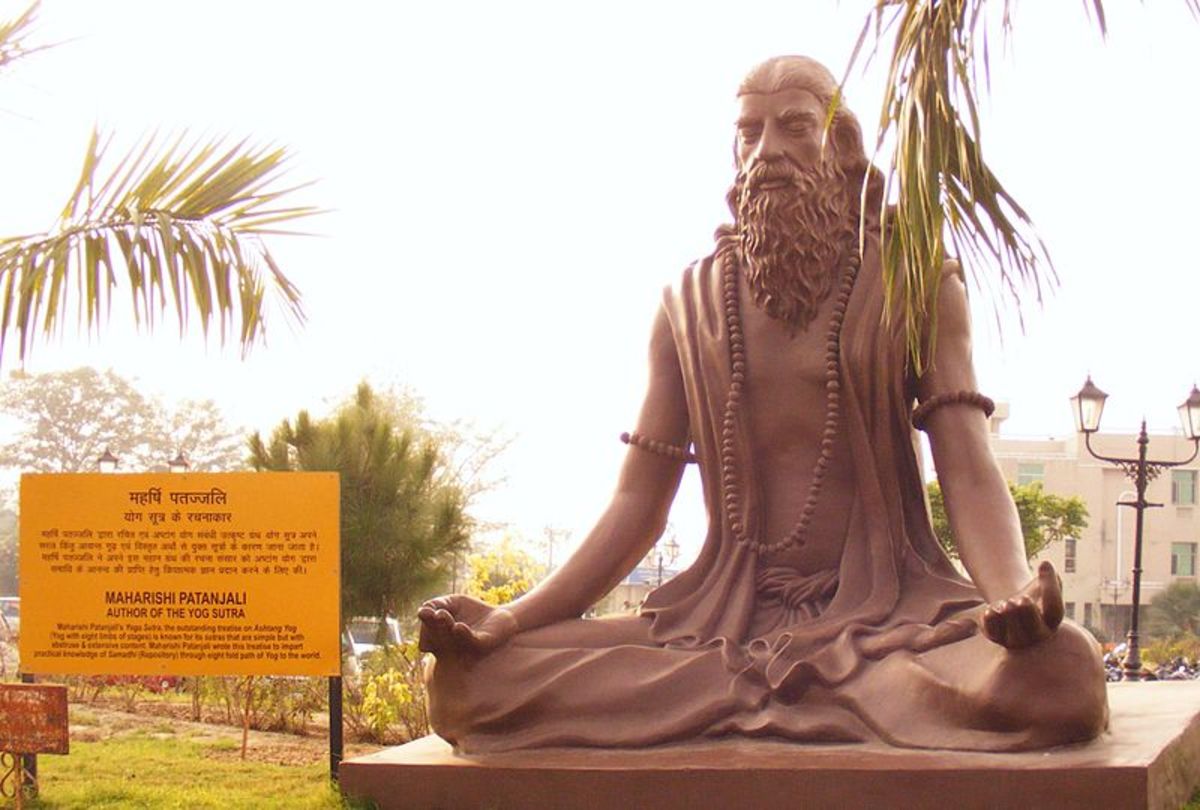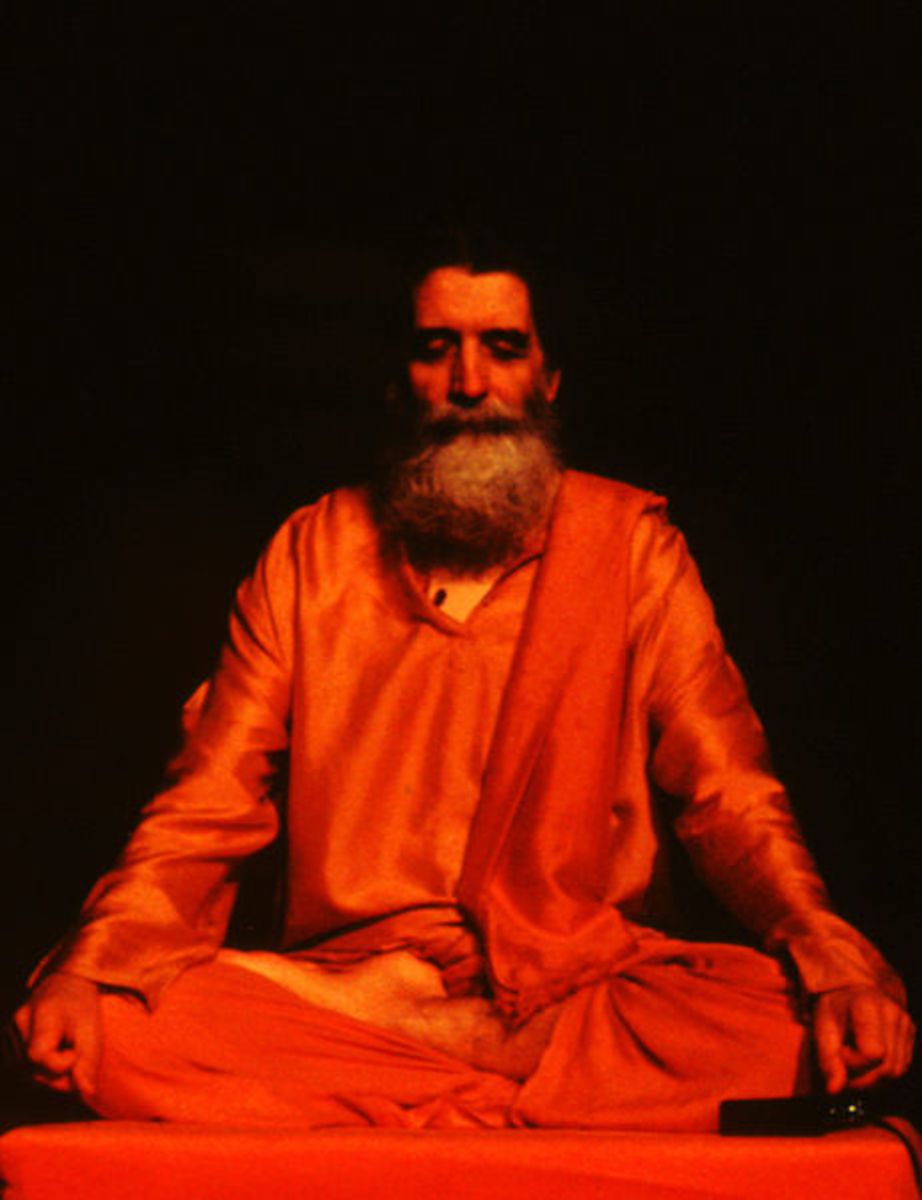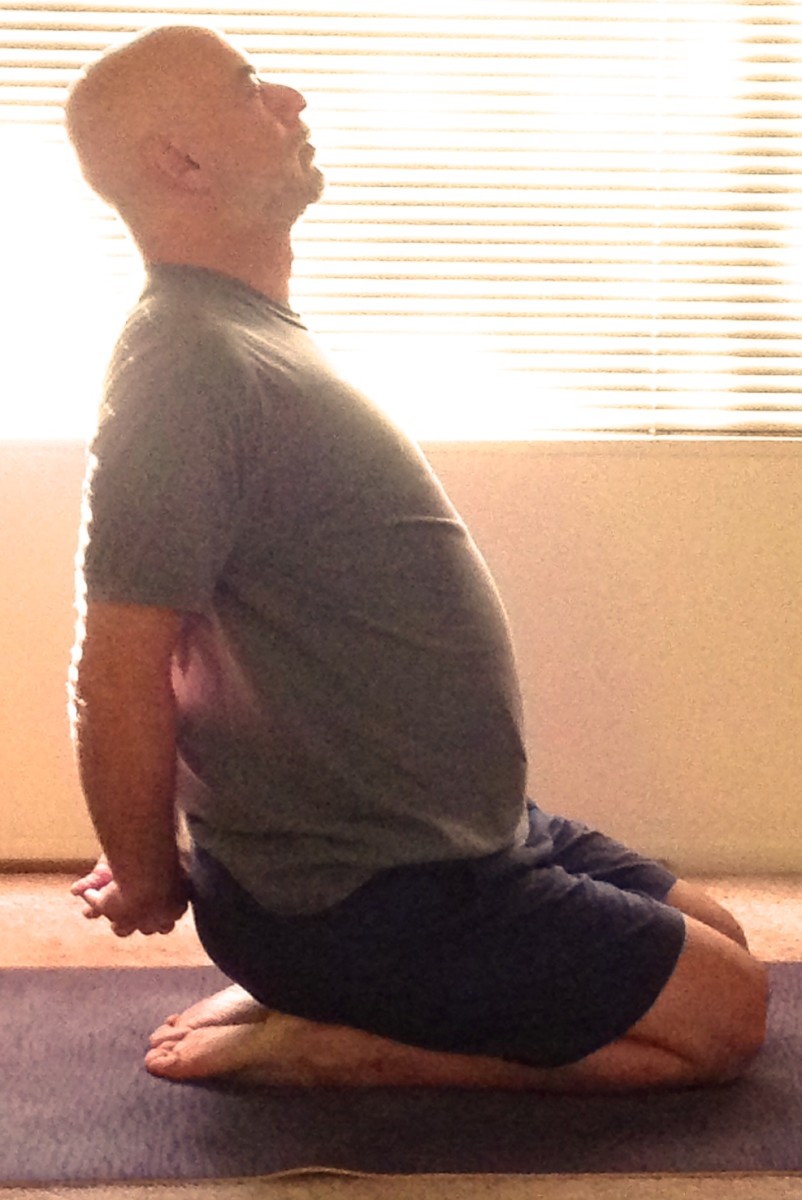What is Yoga? Basic Principles of Yoga
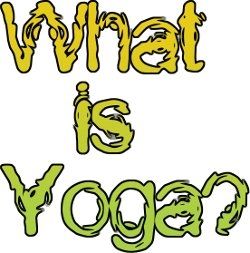
What is Yoga, Its Role In Our Lives
What is Yoga? Yoga in Sanskrit, the traditional language of India stands for connection, union. Yoga helps us to unite against physical, mental and social problems.
A Yogi is a person who understands Yoga in its true form and therefore all his voluntary or involuntary actions are for betterment of this universe (and self too which is just a fraction of universe).
Yoga is a natural process, a process of getting closer to nature. Although Yoga is well documented, every individual can have his/her own personal version of Yoga.
Understanding Yoga is Understanding Life
Enjoy Peace & Harmony with Environment, Surrounding and Nature. Three Basic Ingredients of Perpetual Happiness.
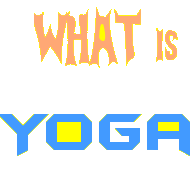
What is Yoga and its applications?
Explore Yoga Online and find about its wide applications.
There are so many answers to the question What is Yoga? There are a number of resources online on yoga, each describe there own interpretation of Yoga.
Learn more from these resources and develop your own yogic philosophy.
1. Yoga at About.com : About.com contains information on a number of relevant topics and gives basic information for beginners on What is Yoga? in an easy to understand and concise explanation.
2. Yoga on Wiki : Wikipedia is the best source of information on any topic, wiki provides an easy reference to different views and branches of Yoga, learn more on History and tradition of Yoga on wiki.
3. Yoga for Special Child : This is a yoga site for children with special requirements. Here is there definition of
4. Philosophy of Yoga : Exploring Yoga is a blog on philosophy of Yoga.
Video of Krishnamacharya - Yoga teacher of Sh. BKS Iyengar & K. Pattahbi Jois
Krishnamacharya, taught Yoga to all of the key figures in modern-day yoga, including T.K.V. Desikachar (his son), Srivatsa Ramaswami , the late Indra Devi, Pattabhi Jois (the founder of Ashtanga yoga), B.K.S. Iyengar (founder of Iyengar yoga).
Learn more about Sh. Krishnamacharya's Yoga.
Books on Yoga - Basic Books on Philosophy of Yoga
Although Yoga is a practical subject and each following step requires the understanding and experience with previous steps, yet books help us to get a glimpse of what is to follow after the current step.
These books are good introduction to Yoga and cover its basic theory, which is based on sound principle of natural health. Yoga is a path, it's a series for achievers where one starts to get benefits in steps i.e.,
1. First Yoga helps us to Improve Physical Health (its the first stage)
2. Second it improves Mental Health, good for most mental problems resulting from modern lifestyle.
3. Third it helps to grow spiritually (those who follow the basic guidelines of Yoga)
Everyone isn't able to progress from one stage to another, as there are some basic requirements/guidelines to be followed both physically as well as mentally. Most people only enjoy benefits of first stage throughout their life, as either there vision is limited or they do not want anything more from it.

Yoga A Universal Harmony
Compatibility in Opinion & Action - Trueness
Yoga is a state of mind, a mind which is under your control. Your opinions and actions become identical. You think what you do and you do what you think. Although this is true for every living being but people try to trick this (natural) system and then they run for a solution. Tricking your actions and your thoughts leads to unnecessary overload on mind, which results in tension and hypertension. This disturbs the natural harmony or coolness of mind and when our mind is disturbed our actions too become disturbed. This disturbance isn't just limited to our external actions alone but this also applies to actions within our body (i.e. regulatory functions in body organs).
Yoga is an attempt to restore this calmness of mind and one can practice Yoga in any form physically or mentally. Yoga in one form will show positive effects of another form of Yoga too. Once a person achieves this Yogic harmony he starts experiencing benefits of Yoga. Those who are deeply involved with Yoga develop a compatibility in there opinions & actions automatically, which leads to spontaneous harmony with the Universe.
There are some fundamental principles of Yoga which aren't usually taught or taken seriously in there original form today. Most of the Yoga Gurus take these principles as the minimum tools one has to acquire to get benefits of Yoga or Understand Yoga. Most modern gurus skip these principles altogether, because our generation today don't like questions but simply solutions and answers.
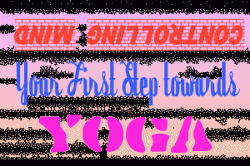
Yoga starts with Controlling Mind
Patanjali's Yoga Sutras
Patanjali's 'Yoga Darshan' is an authoritative book on Indian Yoga. It is divided into four parts ('padas'). In its first Part, second verse, Patanjali writes:
"Yoga Citta-Vritti-Nirodha" (Sanskrit, read more on Patanjali's Yog Sutra at Wiki).
"Yoga is the restraint of mental modifications"
This means we start Yoga by controlling our mind, or Yoga is a method of controlling our mind, (which is known as meditation today). We all known our whole body and its parts, organs, functions as well as our external attitude and behavior towards society and ourselves is governed by our brain.
In order to insure physical welfare of our body (physical fitness, health) and that of our environment and society, controlling mind is the best solution. This will result in overall efficiency. Even when we practice other forms of Yoga, this 'Sutras' of Patanjali will help us in getting maximum results.
You can read English Translation of 'Yoga Darshan' online at 'Siddha Siddhanta'. This website is dedicated to Yoga and its philosophy from an Indian view.
Shiv Yoga - Effective Yogic Philosophy
Union of the finite with the Infinite -Constitutes Yoga
A Yogic Philosophy with Practival Applications
Nowadays new definition and application of 'Yoga' are being made public by a number of groups in India and around the world. All these definitions and applications aren't new and have been there with Yoga Gurus and Shadhaks for centuries, but now they are redefined or explored in the light of modern requirements and new scientific discoveries.
There is nothing wrong in it, if that can help some more people in realizing there dream. Today's modern generation needs explanations and attractiveness beforehand and new definitions provide this food for there modern thoughts. These modern definitions or refined definitions to suit modern men to a great extent, traditionally advantages of Yoga in everyday life weren't discussed in current form. Now, new definitions are doing it after all they have evolved by keeping modern generation in mind.
Shiv Yoga is one such process taking place in the field of Philosophy of Yoga. It gives remarks on Yog with evidences from discoveries in modern science as a proof.
This form of Yoga was earlier known as 'Sahaj Yoga' or 'Raj Yog' but now with some omissions and corrections its 'Shiva Yoga'.
Basic Yoga Stuff - Add or Vote for Yoga Stuff you like.



Classification of Yoga
Yoga isn't just A Physical Posture or Breathing Exercise, its An Art of Living
Today most of what we come across on 'yoga' is a commercial by-product in the name of yoga. Yoga isn't just physical, its not only associated to your breaths, its more than that,its a complete philosophy of life including health, happiness and well being. Human beings have diversified interests and requirements what is good for one may not be of any use to another.
If we develop this understanding of 'Yoga', we'll have a better perspective and will drive far more benefits from the same 'yogic postures' that we already know.
Yoga doesn't requires any purchases or tools to take its benefits its only you and me who have a status a lifestyle which have to be maintained. I am not saying its bad to purchase these accessories, I'm just trying to point that they shouldn't work as a restriction because you can't afford them.
Do you require any object or tool to be good. If such a tool is available then kindly provide a reference to it in your lens.
Yoga Teaching Video Part-I - Yoga philosophy including Samkhya and a brief outline of Patanjali's Yoga Sutras
Learn basics of Yoga in this Yoga Teaching Video Part-I
Yoga Teaching Video Part-II - Yoga philosophy and a brief outline of Patanjali's Yoga Sutras
Learn basics of Yoga in next part of video Yoga Teaching Video Part-II
Yoga Teaching Video Part-III - Yoga philosophy, Patanjali's Yoga Sutras, Yoga Asanas, Pranayama
Learn basics of Yoga in next part of video Yoga Teaching Video Part-III
Yoga Teaching Video Part-IV - Yoga philosophy, Patanjali's Yoga Sutras, Yoga Asanas, Pranayama
Learn basics of Yoga in next part of video Yoga Teaching Video Part-IV
Yoga Teaching Video Part-V - Yoga philosophy, Patanjali's Yoga Sutras, Yoga Asanas, Pranayama
Learn basics of Yoga in next and final part of video Yoga Teaching Video Part-V
Yoga Accessories & Books - Books and Accessories for Yoga
Some books and accessories currently available in Ebay auctions.
Yoga & Bhoga
Yoga isn't a way to satiate Bhoga
Yoga and Bhoga are two opposite directions, like Yogis and Bhogis. Yoga is constructive, Bhoga is destructive. Today Yoga is marketed with a bhogavadi pravitti. Real Magic has articles on these Bhogvadi Pravitti.
Bhoga means food, use, enjoy, please. Bhogees have a tendency to consume an object of pleasure, enjoyment beyond the natural limit. This tendency leads to loss of power and sense of pleasure over time. This Bhoga includes everything that is consumable whether its food, drink, leisure and other objects of lust.
Today Yoga is thought to be a way to repair, maintain and improve Bhoga. It is just like using a gun for offense instead of defense, it doesn't makes any difference to the gun but the end results and the distance that separates them apart.
It is true that Yoga is capable of bestowing all these benefits but actually a Yogi doesn't considers these things seriously.
These powers are just initial reflection of a Yogic progress and act as a limiting force. Those who stop here in order to enjoy and display these powers, get trapped in the comfort zone and can't move further, as they lose sight of there real objective.
So, Do Yoga and restrain Bhoga.
What is Yoga - Willem Dafoe - A VHS Video titled 'What is Yoga'
This is 56 min. VHS video released in 1998, more then 10 years ago. Willem Dafoe has acted in 'What is Yoga '.
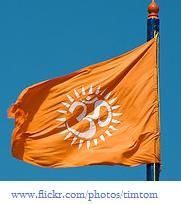
Yoga Darshan - Yoga Sutras of Patanjali
Ancient foundational text of Yoga.
'Yoga Darshan' is a very important book on philosophy of Yoga, written by Maharishi Patanjali. This foundational text of Yoga in Yoga Darshan is popularly known as Yoga Sutra. The Sutras of Yoga Darshan, not only provide Yoga with a thorough and consistent philosophical basis, they also clarify many important esoteric concepts of Indian Thoughts.
Yoga Darshan divides these Yoga Sutras into four parts. They are:-
Part I - Samadhi Pada : Samadhi Pada is the introductory section. It contains 51 Sutras.
Part II - Sadhana Pada : This is the second chapter of Yoga Darshan and contains 55 Sutras. In this part Maharashi Patanjali discusses various methods of doing Yoga. Please note the Yoga discussed here isn't a physical Yoga with poses but its mental Yoga, Yoga of mind. In this part of Yoga Sutras Patanjali also describes problems encountered in Yoga and solution for there removal.
Part III - Vibhuti Pada : Vibhuti in sanakrit means power, energy. This chapter of Yoga Sutras contains 56 sutras. In this portion Maharashi Patanjali describes Dharna, Dhyan and Samadhi. He also describes the various forms of energy (and powers) that manifest a Yogi and how to avoid (ignore) them and continue practice to reach the ultimate goal.
Part IV - Kaivalya Pada : Kaivalya means liberation. Liberation from problems, darkness and worldly illusion for ever. This chapter of Yoga Sutra contains 34 Sutras.
Light on Yoga Sutras - Yoga Book - Understand Basics of Yoga by Patanjali
B.K.S. Iyengar is the world's most revered living teacher of Yoga. He was the first person to bring Yoga to the West and his teaching has been hugely influential over the past three decades. He now lives and teaches in Pune, India.

Physical Yoga and Mental Yoga
Yoga Sutras discuss Mental Yoga but Physical Yoga is the hype
Yoga discussed in Patanjali Yoga Sutra is Mental Yoga i.e. Yoga of mind or Yoga of subconscious mind. Yoga Sutras discuss this form of Yoga. Yogis used Physical Yoga as a convenient tool to help in Mental Yoga.
Physical Yoga and Mental Yoga are both capable of providing a number of benefits. These benefits come automatically right from the initial stage in Yoga. Most of us do Yoga for these limited benefits only, as we don't have time and aspiration to look for more.
Mental Yoga is far more powerful than Physical Yoga, as mental abilities of human beings are not limited to just a human body but it crosses all the existing barriers for human body and human mind. Which form of Yoga is powerful and beneficial depends on the aspirant and his views, as all forms of Yoga aren't suitable for everyone. Some people are extrovert, others are introvert. One can start with any form of Yoga accessible to him and soon he will realize whether he finds it interesting after some time.
Today what we see as Yoga is mostly Physical Yoga as people want result, they are not interested in reaching any destination but they are just looking for a nearby stop. Mental Yoga is far more difficult than Physical Yoga as human mind is very unstable and very difficult to control for a long period of time. Mental Yoga is about controlling it to such an extent that it ceases to even think anything without permission.
We can use Physical Yoga as a vehicle to initiate us in Mental Yoga because then it will become much easier and convenient.
If you are interested you can read this post on philosophy of Yoga titled "Mental purity & Three Fold Yoga".
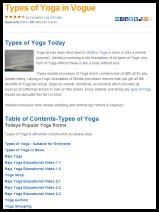
Types of Yoga
Different forms of Yoga Available Today.
Yoga is an understanding, a philosophy which is developed to reach higher states of physical wellbeing, mental wellbeing and spirituality. Today people think Yoga to be a type of exercise routine, most consider it to be a type of aerobic exercise. This is not true as they are only a branch of Yoga.
Yoga is itself a complete philosophy of living. Understanding of Yoga can give better results with any type of Yoga we do. Today we don't have enough time to understand things, we can read, we can participate but we cannot spare our brain to understand the depth cause we are over engaged.
Today there are many forms and types of yoga some of them are traditional (traditionally each type or branch of Yoga was meant to fulfill a different goal or different path) and rest of them are modern. Some form of Yoga today seem to be a provocation of Bhoga.
There is a separate lens which deals with types of yoga, you can read the basic information and watch some videos.
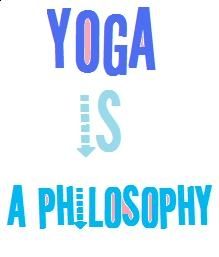
Yoga Philosophy
Yoga Is A Philosophy
Ancient books on Yoga which are mainly in sanskrit, do not talk about Yoga in the way we see today, at that time Yoga was a philosophy, which was mastered with its physical forms (ashana and pranayama). It was more important to understand and follow this philosophy before moving to its higher forms.
Today nobody is willing to understand this philosophy which can bring a universal calmness, because they look very simple, impractical in today's environment, but if one believes in Yoga then he/she should also believe in this philosophy as it is more powerful and beneficial then its physical forms i.e., ashana or postures and pranayama or art of breathing.
There are a number of steps in Yoga and after completing and mastering one step a disciple moves to next one. Today most of us are only limited to its 1st step which has very limited benefits.
Here is the Yogic path which a Yoga disciple has to follow (traditionally) :-
Personal Wellness
1. Improve Health and Wellness with postures.
2. Improve Mental Health and Strength with Pranayama
Social Wellness
3. Meditation or Dhyan helps in controlling our desires/ego/selfishness which helps to develop good relations
Universal Wellness
4. Higher stages of Yoga take a person to universal level, a person thinks beyond the visible territory of various forms created by us.
Yoga can be a single solution to a number of problems in modern society, if it is understood and followed the way it actually is. Look at the great Yoga, who are actually the masters of this art, they do not show or say anything but they make us feel. So, if you have time and are interested in doing something beyond the common human limits then try to understand philosophy of yoga.





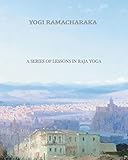







![What is Yoga [VHS]](https://m.media-amazon.com/images/I/51BGAB7EGNL._SL500_.jpg)
